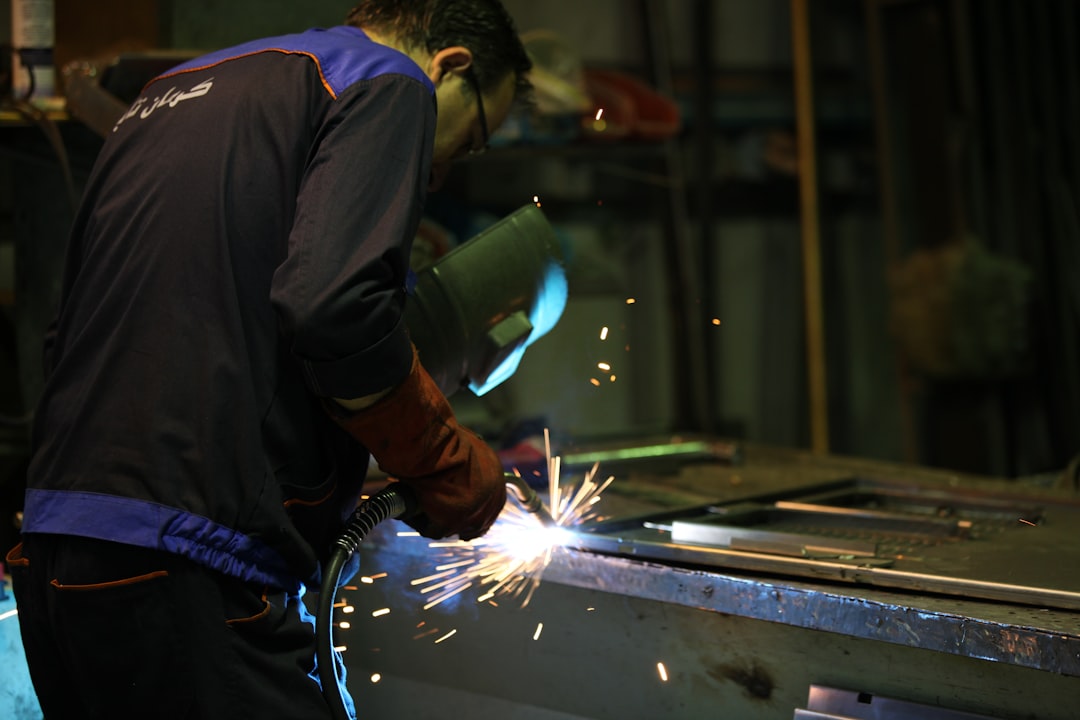Diode laser hair removal is a popular cosmetic procedure that utilizes concentrated light beams to target and eliminate unwanted hair. This method employs a specific wavelength of light that is absorbed by the pigment in the hair follicles, effectively damaging them and inhibiting future hair growth. Unlike traditional hair removal methods such as shaving or waxing, which only provide temporary results, diode laser technology offers a more permanent solution.
The procedure is suitable for various skin types and hair colors, making it a versatile option for many individuals seeking smoother skin. The diode laser operates by emitting a beam of light that penetrates the skin and is absorbed by the melanin in the hair. This process generates heat, which damages the hair follicle while leaving the surrounding skin unharmed.
The treatment can be performed on various body areas, including the legs, arms, underarms, bikini line, and even the face. As a result, diode laser hair removal has gained popularity among those looking for an efficient and long-lasting alternative to conventional hair removal methods.
Key Takeaways
- Diode laser hair removal is a cosmetic procedure that uses a concentrated beam of light to remove unwanted hair.
- The benefits of diode laser hair removal include long-lasting results, minimal discomfort, and the ability to treat large areas of the body.
- Risks and side effects of diode laser hair removal may include skin irritation, redness, and changes in skin pigmentation.
- Good candidates for diode laser hair removal are individuals with fair skin and dark hair, as the laser targets the pigment in the hair follicle.
- Before diode laser hair removal treatment, it is important to avoid sun exposure and certain hair removal methods to ensure the best results.
- The procedure of diode laser hair removal involves the use of a handheld device to deliver the laser energy to the targeted area, destroying the hair follicles.
- Aftercare for diode laser hair removal may include applying soothing creams and avoiding sun exposure, with minimal downtime for recovery.
- When choosing a professional for diode laser hair removal, it is important to look for a qualified and experienced practitioner with a good reputation.
The Benefits of Diode Laser Hair Removal
One of the most significant advantages of diode laser hair removal is its long-lasting results. After completing a series of treatments, many individuals experience a substantial reduction in hair growth, with some achieving permanent hair removal. This means you can say goodbye to the hassle of regular shaving or waxing sessions, allowing you to enjoy smoother skin without the constant upkeep.
The convenience of this method is particularly appealing for those with busy lifestyles who want to save time on grooming. In addition to its effectiveness, diode laser hair removal is known for its precision.
This precision minimizes the risk of irritation and ensures that you achieve optimal results without compromising your skin’s health. Furthermore, diode lasers are equipped with advanced cooling systems that help soothe the skin during treatment, making the experience more comfortable compared to other hair removal methods.
The Risks and Side Effects of Diode Laser Hair Removal
While diode laser hair removal is generally considered safe, it is essential to be aware of potential risks and side effects associated with the procedure. Some individuals may experience temporary redness, swelling, or mild discomfort in the treated area following the session. These side effects typically subside within a few hours to a couple of days.
However, in rare cases, more severe reactions such as blistering or changes in skin pigmentation may occur, particularly in individuals with darker skin tones. To minimize the risk of adverse effects, it is crucial to follow pre-treatment guidelines and choose a qualified professional for your procedure. Additionally, individuals with certain medical conditions or those taking specific medications may not be suitable candidates for diode laser hair removal.
Consulting with a healthcare provider or licensed practitioner can help you determine if this treatment is right for you and address any concerns you may have.
Who is a Good Candidate for Diode Laser Hair Removal?
| Criteria | Description |
|---|---|
| Skin and Hair Color | Ideal candidates have light skin and dark hair, as the laser targets the pigment in the hair follicle. |
| Hair Thickness | Thicker, coarser hair responds best to diode laser treatment. |
| Age | Adults are generally better candidates as their hair growth patterns are more stable. |
| Health Conditions | Certain health conditions or medications may make individuals unsuitable for diode laser hair removal. |
| Expectations | Realistic expectations about the results and the number of sessions required are important for good candidates. |
Diode laser hair removal is suitable for a wide range of individuals; however, certain factors can influence your candidacy for the procedure. Generally, those with light skin and dark hair tend to achieve the best results due to the contrast between the pigment in the hair and the surrounding skin. The diode laser effectively targets the melanin in dark hair, making it easier to destroy the follicles while minimizing damage to the skin.
That said, advancements in laser technology have made it possible for individuals with various skin tones and hair colors to benefit from diode laser hair removal. If you have lighter hair or darker skin, it’s essential to consult with a qualified practitioner who can assess your unique situation and recommend the best approach for your needs. Ultimately, a thorough evaluation will help determine if you are a good candidate for this treatment.
Preparing for Diode Laser Hair Removal Treatment
Preparation is key to ensuring a successful diode laser hair removal experience. Before your treatment, you should schedule a consultation with your practitioner to discuss your medical history, skin type, and any medications you may be taking. This initial meeting allows your provider to tailor the treatment plan to your specific needs and address any concerns you may have.
In the weeks leading up to your appointment, it’s essential to avoid sun exposure and tanning beds, as these can increase the risk of complications during treatment. Additionally, refrain from waxing or plucking hairs in the area being treated for at least four weeks prior to your session; this ensures that the laser can effectively target the hair follicles. Shaving is typically recommended just before your appointment to ensure that the laser can penetrate directly to the follicle without interference from longer hair.
The Procedure of Diode Laser Hair Removal

On the day of your diode laser hair removal appointment, you will arrive at the clinic ready for your treatment. Your practitioner will begin by cleaning the area to be treated and may apply a topical anesthetic to minimize any discomfort during the procedure. Once you are comfortable, they will use a handheld device that emits the laser light onto your skin.
The duration of the procedure varies depending on the size of the area being treated; smaller areas like the upper lip may take just a few minutes, while larger areas like the legs may require up to an hour. During treatment, you may feel a sensation similar to a rubber band snapping against your skin as the laser pulses are delivered.
Aftercare and Recovery from Diode Laser Hair Removal
After your diode laser hair removal session, proper aftercare is essential for optimal results and recovery. You may notice some redness or swelling in the treated area; this is normal and should subside within a few hours to a couple of days. To soothe any discomfort, applying a cool compress or aloe vera gel can be beneficial.
It’s also advisable to avoid hot showers, saunas, or strenuous exercise for at least 24 hours post-treatment to minimize irritation. In addition to managing immediate side effects, protecting your skin from sun exposure is crucial during your recovery period. Wearing sunscreen with a high SPF on treated areas will help prevent pigmentation changes and ensure that your skin heals properly.
Your practitioner will provide specific aftercare instructions tailored to your needs; following these guidelines will help you achieve the best possible results from your diode laser hair removal treatment.
Choosing a Qualified Professional for Diode Laser Hair Removal
Selecting a qualified professional for your diode laser hair removal treatment is one of the most critical steps in ensuring a safe and effective experience. Look for practitioners who are licensed and certified in laser treatments; they should have extensive training and experience specifically in diode laser technology. Reading reviews and testimonials from previous clients can also provide insight into their expertise and patient satisfaction.
During your initial consultation, don’t hesitate to ask questions about their qualifications, experience with diode lasers, and safety protocols they follow during treatments. A reputable practitioner will be transparent about their methods and willing to address any concerns you may have. By taking the time to choose a qualified professional, you can feel confident in your decision and look forward to achieving smooth, hair-free skin through diode laser hair removal.
If you are considering diode laser hair removal, it is important to weigh the benefits and potential side effects. According to a recent article on inlaserhairremoval.com, diode laser hair removal is a popular choice for its effectiveness in reducing hair growth and providing long-lasting results. However, it is essential to be aware of potential side effects such as skin irritation, redness, and changes in pigmentation. It is always recommended to consult with a professional before undergoing any hair removal treatment to ensure the best results and minimize any risks.
FAQs
What are the benefits of diode laser hair removal?
Diode laser hair removal offers several benefits, including long-lasting results, minimal discomfort, and the ability to target large areas of the body. It is also effective for all skin types and can be used on both men and women.
How does diode laser hair removal work?
Diode laser hair removal works by targeting the pigment in the hair follicles, heating them up and damaging the follicle to inhibit future hair growth. The laser energy is absorbed by the melanin in the hair, while the surrounding skin remains unharmed.
What are the potential side effects of diode laser hair removal?
Some potential side effects of diode laser hair removal may include temporary redness, swelling, and discomfort in the treated area. In rare cases, there may be changes in skin pigmentation or scarring, but these are uncommon when the procedure is performed by a qualified professional.
Is diode laser hair removal safe for all skin types?
Diode laser hair removal is generally safe for all skin types, including darker skin tones. However, it is important to consult with a qualified practitioner to determine the most suitable treatment plan for individual skin types and conditions.
How many sessions are typically needed for diode laser hair removal?
The number of sessions needed for diode laser hair removal varies depending on the individual’s hair type, skin color, and the area being treated. On average, most people require 6-8 sessions spaced several weeks apart to achieve optimal results.
Is diode laser hair removal permanent?
While diode laser hair removal can significantly reduce hair growth, it is not always permanent. Some hair may eventually regrow, but it is typically finer and lighter in color. Maintenance sessions may be needed to sustain the results.






